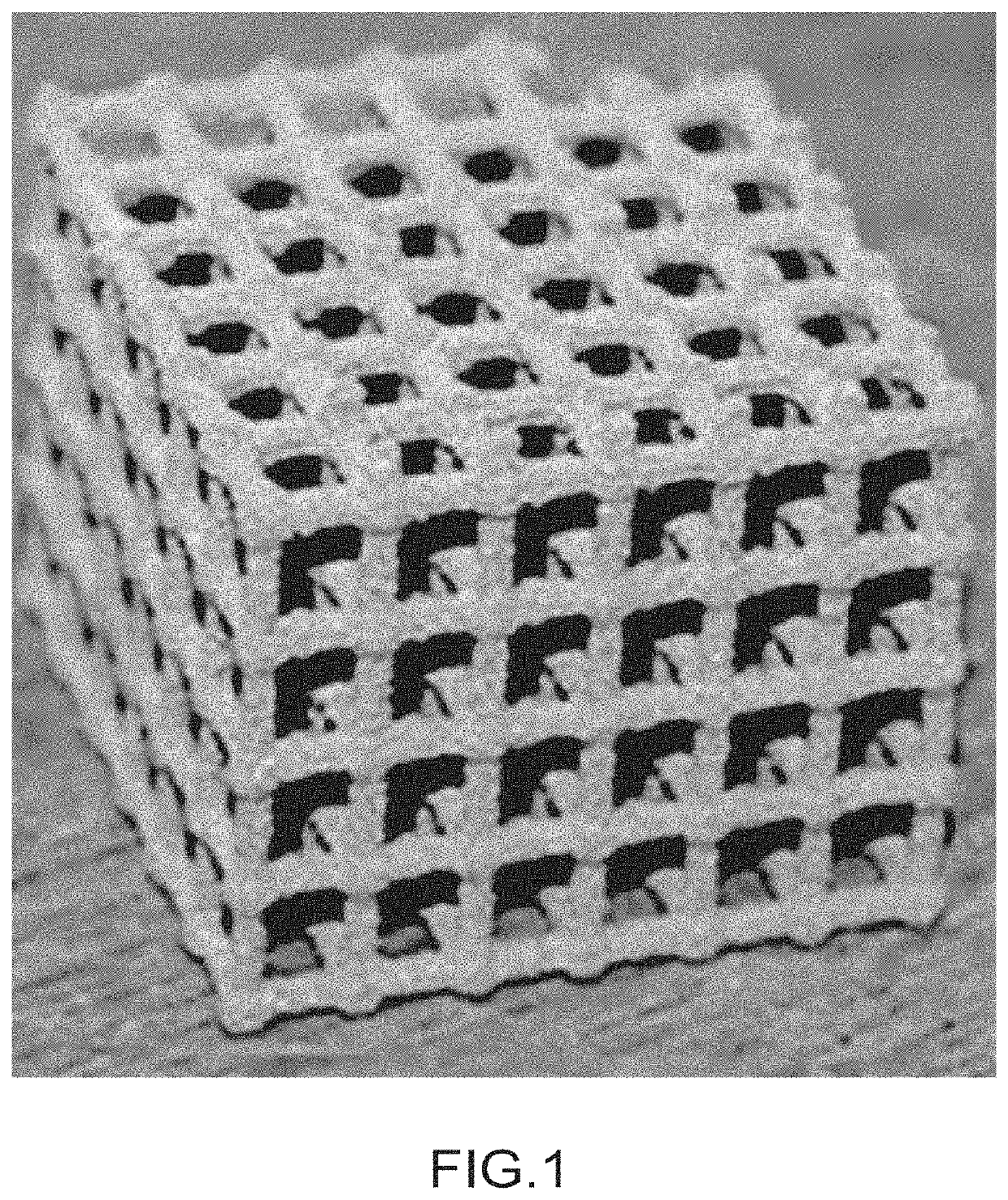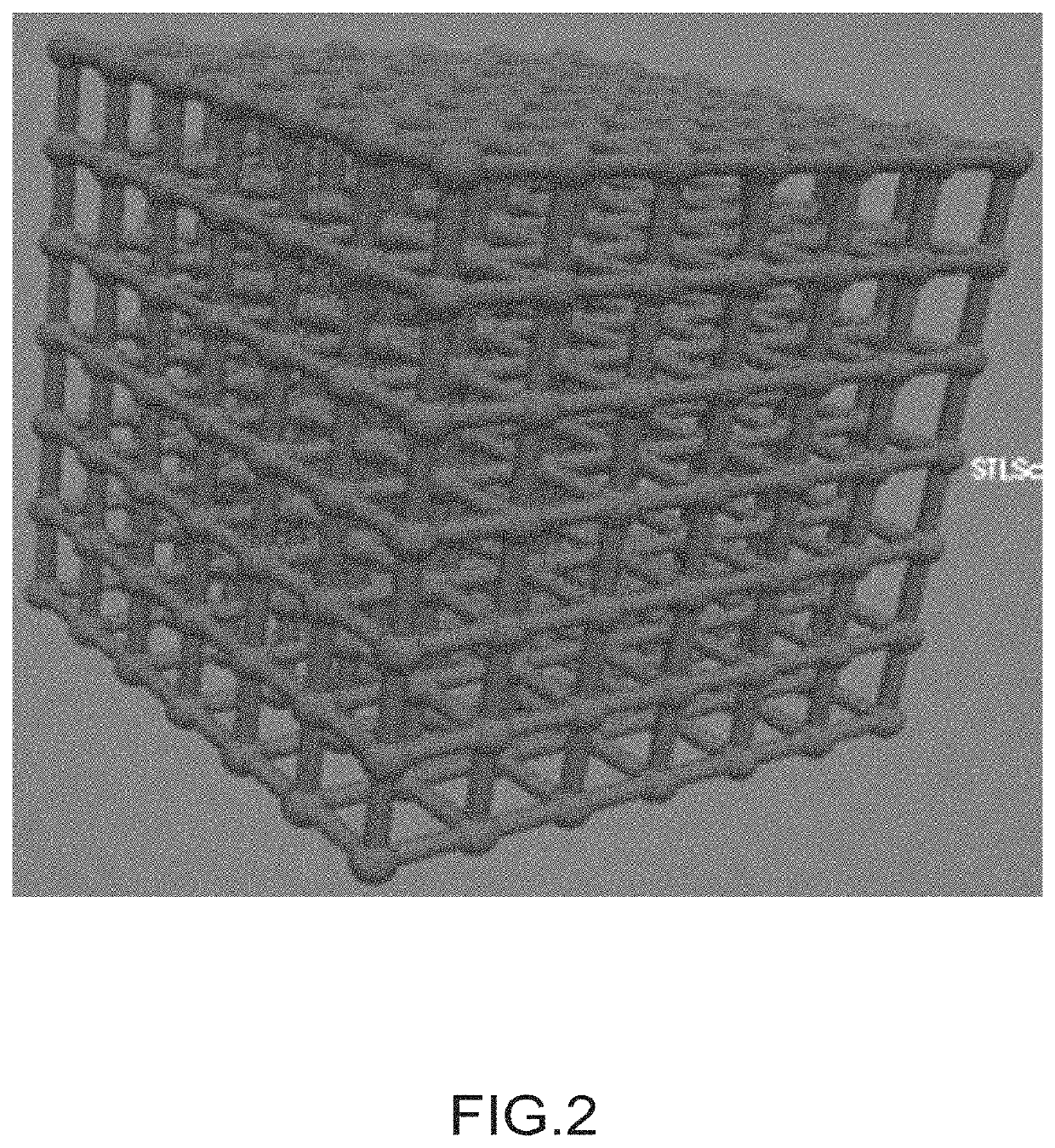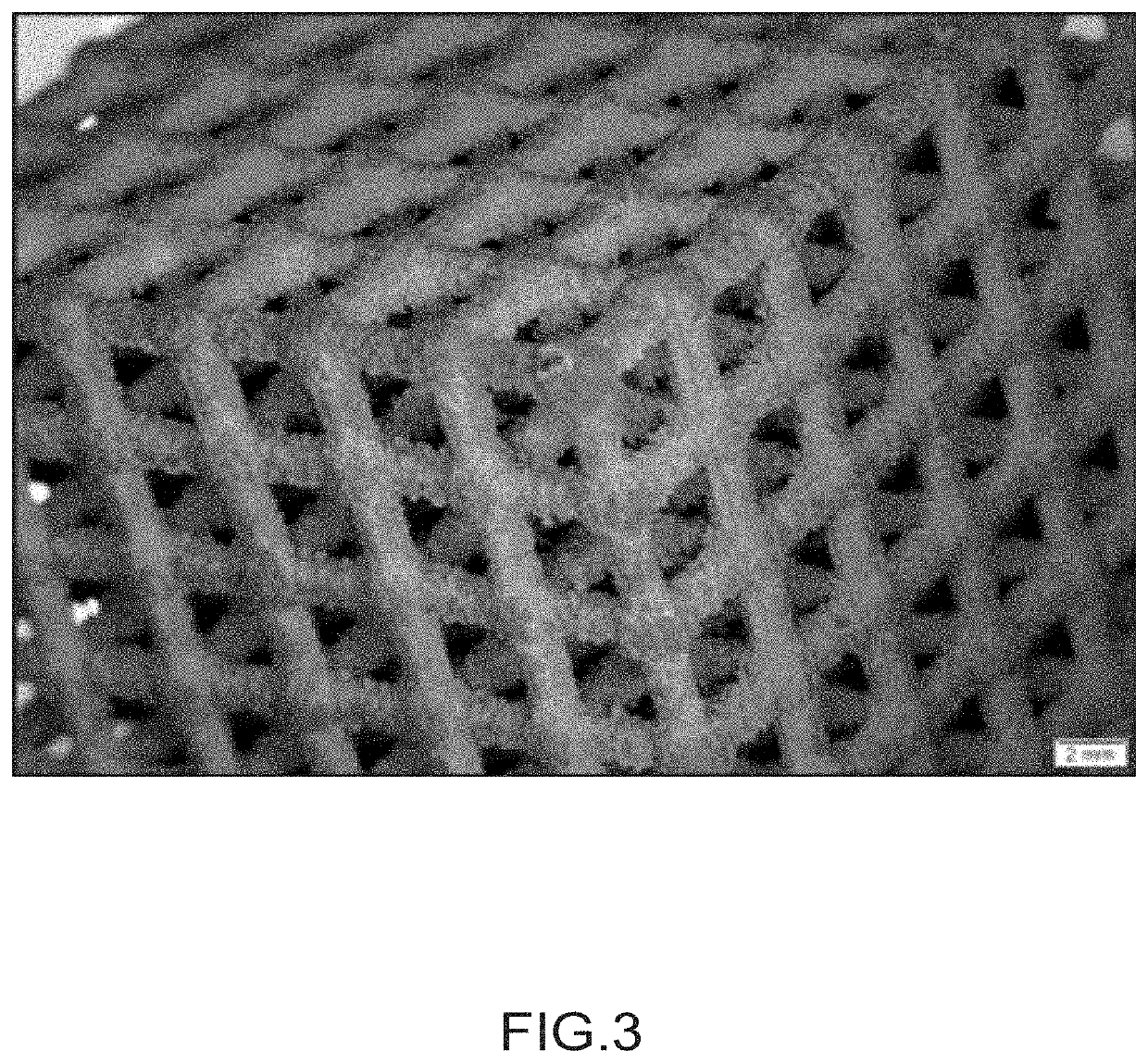Particulate composite ceramic material, part comprising said material, and method for the preparation of said part
a composite ceramic and part technology, applied in ceramics, manufacturing tools, other domestic objects, etc., can solve the problems of machining of parts, high cost of equipment, and additives that are detrimental to the properties of materials, and achieve high density, high kinetics, and high density
- Summary
- Abstract
- Description
- Claims
- Application Information
AI Technical Summary
Benefits of technology
Problems solved by technology
Method used
Image
Examples
example 1
[0200]Production of a Part with Lattice Structure Made of SiC, Formed, Shaped by Additive Manufacturing.
[0201]In this example, a lattice structure made of SiC, which is formed by additive manufacturing, is manufactured by the method according to the invention.
[0202]First of all, a mixture of a plaster powder and of a SiC powder is prepared.
[0203]The SiC powder is mixed with the plaster powder, in the proportions of 70% by mass of SiC, and of 30% mass of plaster.
[0204]The SiC powder is available from Sigma Aldrich®, under the reference 357391, the SiC powder has a particle size of 400 mesh.
[0205]The plaster powder is available from 3D System®, under the reference ZP® 151. It is in fact according to the technical data sheet a “High Performance Composite” that is to say plaster with a few additives.
[0206]The mixture is performed by dry process, in a plastic bottle of 1 L, shaken using a so-called “turbulat” powder mixer available from Bioengineering® of 80 W power. The mixture is perfo...
example 2
Production of a Plate Made of MoSi2—SiC.
[0235]In this example, a plate made of MoSi2—SiC is manufactured, by the method according to the invention.
[0236]The procedure is the same as in Example 1, but with the following differences:[0237]a base powder of MoSi2, available from H.C. Starck under the name Amperit® 920-054 (particle size 15-45 microns), instead of a SiC powder, is mixed with the plaster powder, in the mass proportions of 80% MoSi2 and of 20% plaster.[0238]a plate of 10 cm×2 cm×3 mm is obtained by mixing the preceding powder with a solution of 65% of polycarbosilane and 35% of toluene (% by mass), then casting in a mould.[0239]the part is subsequently placed in a CVI furnace with the following infiltration conditions: temperature 950° C., pressure 4 kPa, ratio of the [H2] / [CH3SiCl3] gas flow rates=4, duration 40 h.
[0240]The other steps, impregnation, pyrolysis, heat treatments and elimination of the plaster are carried out in the same conditions as in Example 1.
[0241]The ...
PUM
| Property | Measurement | Unit |
|---|---|---|
| Temperature | aaaaa | aaaaa |
| Temperature | aaaaa | aaaaa |
| Temperature | aaaaa | aaaaa |
Abstract
Description
Claims
Application Information
 Login to View More
Login to View More - R&D
- Intellectual Property
- Life Sciences
- Materials
- Tech Scout
- Unparalleled Data Quality
- Higher Quality Content
- 60% Fewer Hallucinations
Browse by: Latest US Patents, China's latest patents, Technical Efficacy Thesaurus, Application Domain, Technology Topic, Popular Technical Reports.
© 2025 PatSnap. All rights reserved.Legal|Privacy policy|Modern Slavery Act Transparency Statement|Sitemap|About US| Contact US: help@patsnap.com



